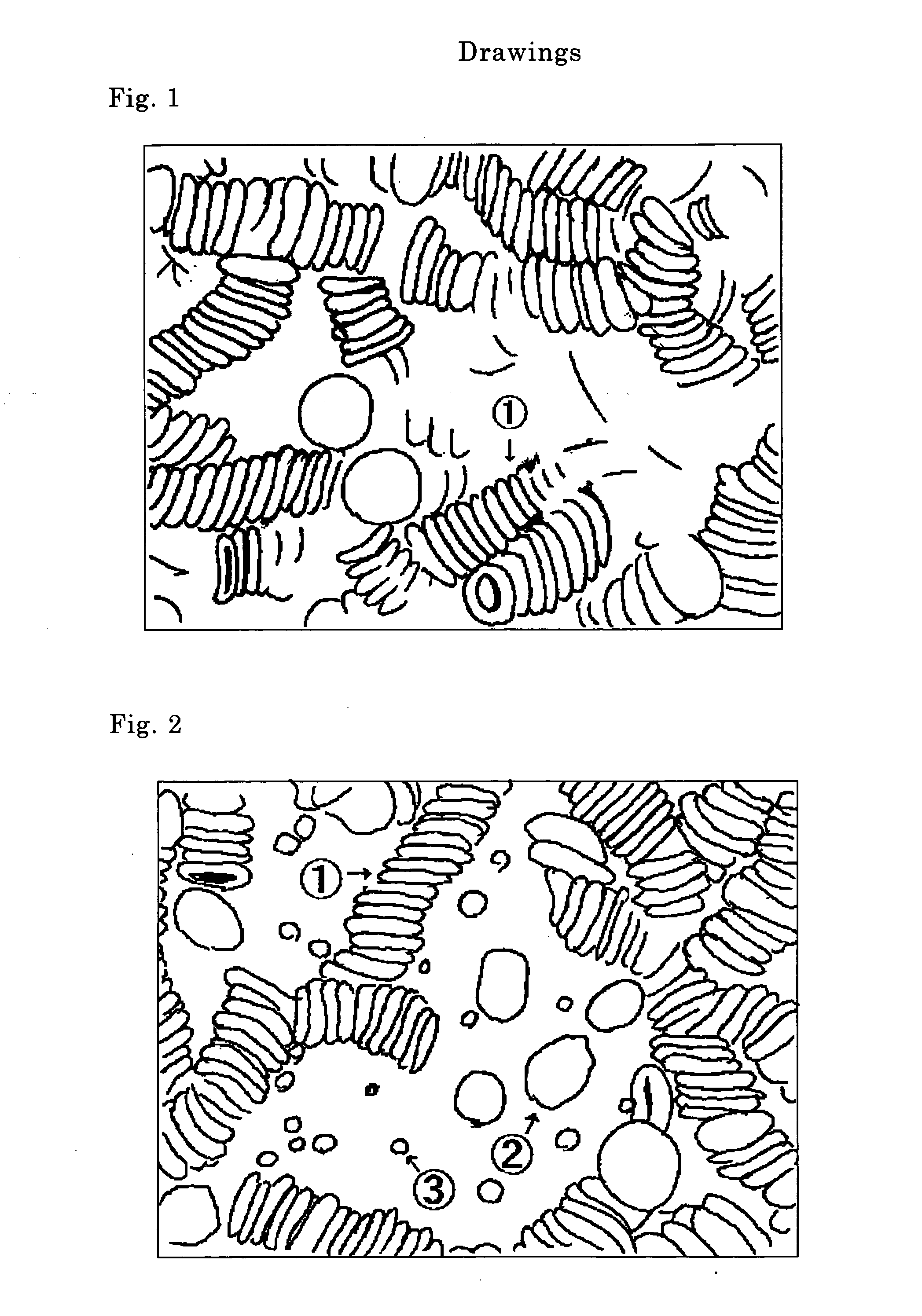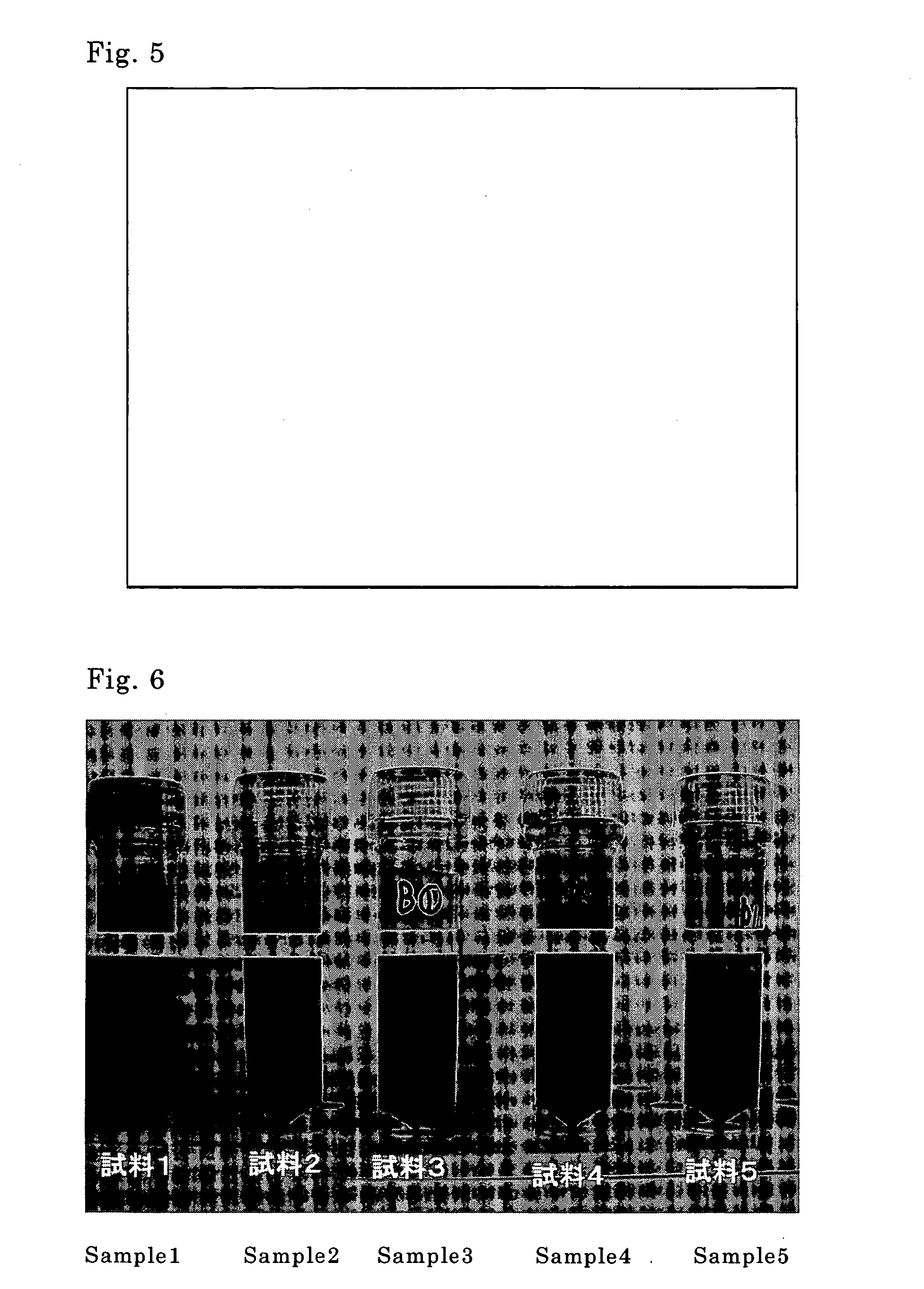Method for preparing platelet-rich plasma
a technology of platelet-rich plasma and platelet-rich plasma, which is applied in the field of platelet-rich plasma, can solve the problems of high activity, use of patient's own blood, and use of patient's own blood, and achieve the effect of high activity
- Summary
- Abstract
- Description
- Claims
- Application Information
AI Technical Summary
Benefits of technology
Problems solved by technology
Method used
Image
Examples
example 1
(Object)
[0112] The object of this example was to examine the appearance of supernatant and effect on sedimentation of red blood cells produced by addition to whole blood (peripheral blood) of sodium poly-L-glutamate (molecular weight 21,270) (manufactured by Sigma Chemical Co.), and measure the number of cells in the supernatant and observe the shape of cells using a differential interference microscope.
(Materials and Method)
[0113] Four kinds of samples were prepared by the following method to compare differences in the rate of red blood cell sedimentation. An anticoagulant was prepared to contain sodium citrate at 3.13 w / v %.
[0114] Sample 1: 2 mg of sodium poly-L-glutamate was added to 1.5 mL of blood.
[0115] Sample 2: 1.35 mL of blood was added to 0.15 mL of the sodium citrate solution to form a total volume of 1.5 mL, and 2 mg of sodium poly-L-glutamate was then added thereto.
[0116] Sample 3: 1.35 mL of blood was added to 0.15 mL of the sodium citrate solution to form a to...
example 2
(Object)
[0132] The object of this example was to examine the effect achieved by addition of sodium poly-L-glutamate (molecular weight 21,270) (manufactured by Sigma Chemical Co.) in cases where the molecular weight was the same but the added amount was changed.
(Materials and Method)
[0133] Five kinds of samples were prepared by the following method. 1.35 mL of blood was added to 0.15 mL of an aqueous solution containing sodium citrate at 3.13 w / v % as an anticoagulant, to obtain a total volume of 1.5 mL for use as whole blood samples. Various amounts of sodium poly-L-glutamate (Sigma Chemical Co.) were added to the whole blood samples. [0134] Sample 1: sodium poly-L-glutamate 1 mg [0135] Sample 2: sodium poly-L-glutamate 2 mg [0136] Sample 3: sodium poly-L-glutamate 2.5 mg [0137] Sample 4: sodium poly-L-glutamate 3 mg [0138] Sample 5: sodium poly-L-glutamate 4 mg
(Results)
1) Sedimentation of Red Blood Cells
[0139] After each of the above samples was allowed to stand for 30 mi...
example 3
(Object)
[0141] The object of this example was to examine the effect obtained when sodium poly-L-glutamate of different molecular weights were added to blood.
(Materials and Method)
[0142] 1.35 mL of blood was added to 0.15 mL of an aqueous solution containing sodium citrate at 3.8 w / v % as an anticoagulant, to obtain a total volume of 1.5 mL for use as whole blood samples. 3 mg of sodium pbly-L-glutamate (Sigma Chemical Co.) of different molecular weights were added thereto to prepare 5 kinds of samples. The rates of sedimentation of red blood cells when each of the above samples was allowed to stand for 30 minutes were compared. [0143] Sample 1: sodium poly-L-glutamate not added (control) [0144] Sample 2: sodium poly-L-glutamate (molecular weight 5,800) [0145] Sample 3: sodium poly-L-glutamate (molecular weight 17,500) [0146] Sample 4: sodium poly-L-glutamate (molecular weight 21,270) [0147] Sample 5: sodium poly-L-glutamate (molecular weight 42,000)
(Results)
1) Sedimentation...
PUM
 Login to View More
Login to View More Abstract
Description
Claims
Application Information
 Login to View More
Login to View More - R&D
- Intellectual Property
- Life Sciences
- Materials
- Tech Scout
- Unparalleled Data Quality
- Higher Quality Content
- 60% Fewer Hallucinations
Browse by: Latest US Patents, China's latest patents, Technical Efficacy Thesaurus, Application Domain, Technology Topic, Popular Technical Reports.
© 2025 PatSnap. All rights reserved.Legal|Privacy policy|Modern Slavery Act Transparency Statement|Sitemap|About US| Contact US: help@patsnap.com



